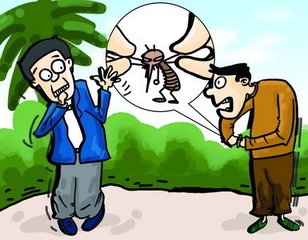The effects of neglected tropical diseases
Pubblicato da NiuKevin il
Disease permanently affects human potential, making it difficult for more than one billion poor people to escape poverty. They also impose an extremely heavy economic burden on the endemic countries.
Some of these diseases have greatly affected the economic productivity of young adults. Some diseases hinder children's development and intellectual development. All these diseases make patients tortured and often lead to social stigma and discrimination. Most diseases are blinded or crippled, resulting in the destruction of appearance or incomplete limbs.
They have a recessive incubation period, and patients often develop symptoms and are severely impaired after almost no symptoms of infection, missing out on medical opportunities. During this period, parasites multiply in the body and accumulate in the tissues, guts, eyes, or lymphatic system after maturation. Some parasites destroy skin and subcutaneous tissue. If it is discovered and treated in time, it will cause irreversible damage. There are still some neglected tropical diseases that can cause death in weeks or months after they enter the late stage.
Severity
One-sixth of the population, that is, more than one billion people, is infected with one or more diseases. These diseases are not valued in the national health plan. These diseases are mainly concentrated in low-income countries in Africa and Latin America, where as many as five to seven diseases may be simultaneously prevalent in large areas of these countries. These diseases have also paid a heavy price in parts of Asia and the Middle East, but the number of overlaps is relatively small.

Why are they neglected
The disease is not very eye-catching. They do not cause a large-scale outbreak and have not caught the attention of the public and the press. They have not spread internationally. Despite the enormous and long-term suffering, they did not result in the loss of a large number of people and did not affect rich countries. When developing a health agenda and budget, these diseases are often overlooked. The funds available for health investment in endemic countries are limited.
These diseases must compete with more dramatic diseases that have a much higher mortality rate and cause a great deal of domestic and international attention. Most of the pain caused by neglected tropical diseases is unknown. Patients are concentrated in remote rural areas and in the huge slums of suburban areas, without access to safe drinking water, low levels of education, poor sanitation, poor housing, and possibly no access to health care.
There are other reasons why these diseases are unknown. Patients have difficulty accessing medical services, and poor families cannot afford expensive expenses. As a result, many people have been dragged to the point where they are severe enough to be unable to reverse their illness. The stigma associated with crippled and disfigured diseases makes patients, especially female patients, unwilling to seek medical attention. In the research and development field, these diseases are also ignored. There is insufficient incentive to develop new diagnostic tools, drugs, and vaccines for diseases that have a market but patients are unable to pay for medical expenses.
